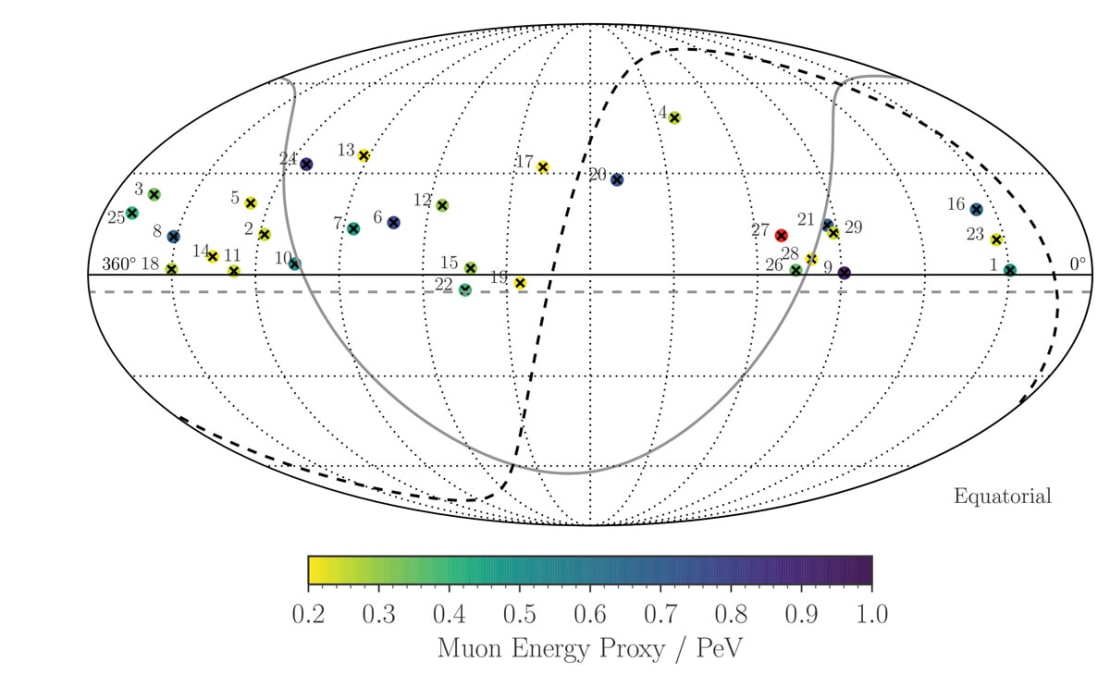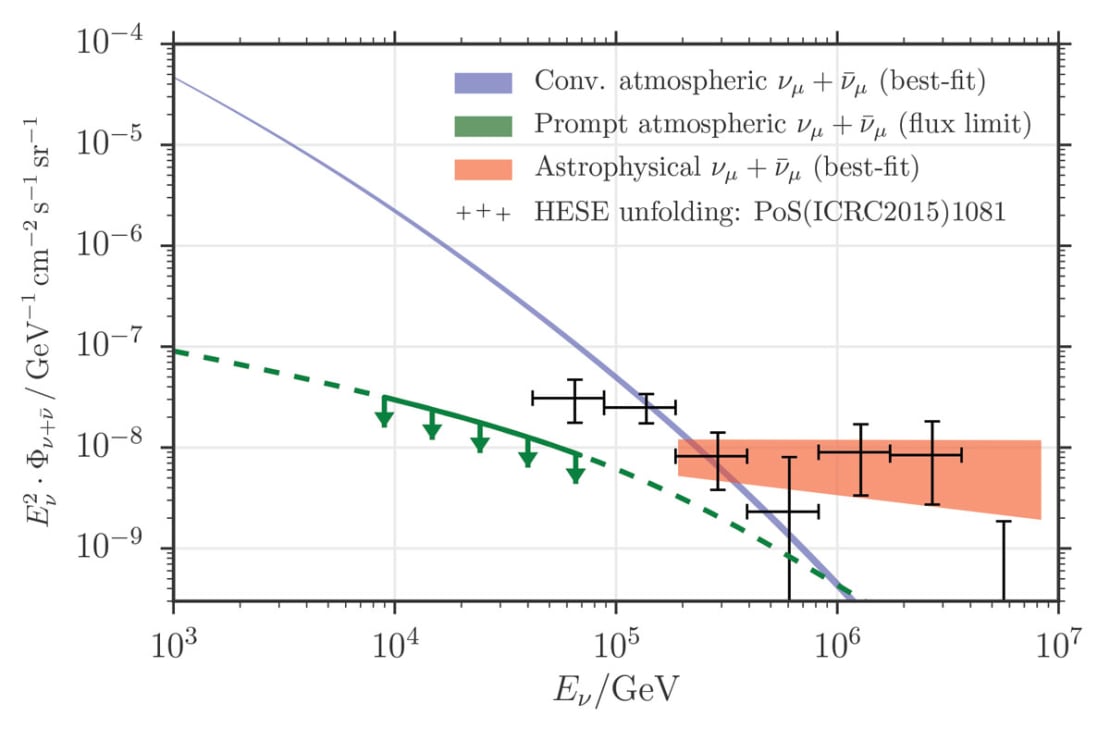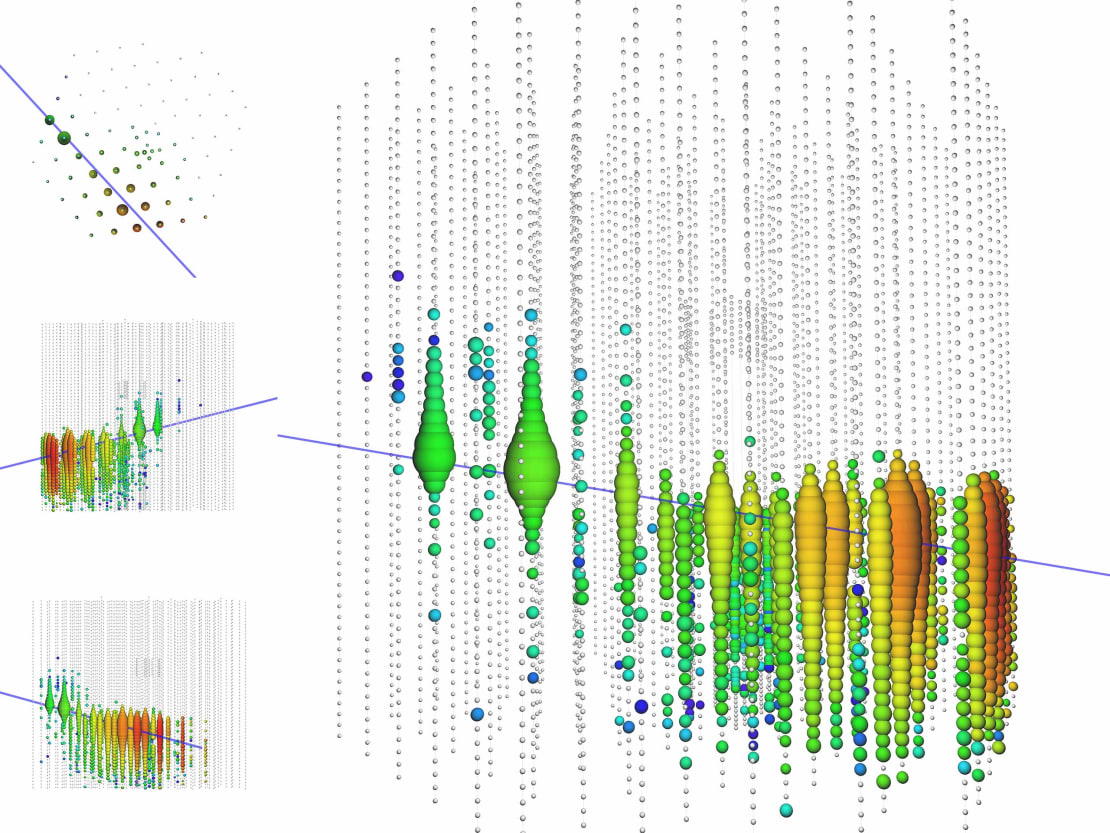The first observation of a cosmic neutrino flux in 2013, also observed later in 2015 by an independent measurement using throughgoing muons from the Northern Hemisphere, has been recognized as a breakthrough in neutrino astronomy.
The IceCube Collaboration is now accumulating more statistics in the search for the sources of very high energy neutrinos, but also to learn more about their nature. In a new study, submitted this week to the Astrophysical Journal, the collaboration reports a substantially improved observation of the diffuse muon neutrino flux in the Northern Hemisphere using six years of IceCube data with about a tenfold increase in statistics. Once more, a clear astrophysical contribution has been found, which at the highest energies excludes a purely atmospheric origin at the 5.6 sigma level. Also, the accuracy of the measurement of the spectral properties has been improved.
The highest energy events, including the most energetic neutrino detected to date, have been used to look for correlations with known gamma-ray sources, clusters in their arrival directions, and anisotropies related to the galactic plane. The high statistics of about 350,000 well-reconstructed upgoing muon events also allowed the most sensitive measurement to date of the contribution of prompt atmospheric neutrinos, which was found to be zero, compatible with previous findings.
The basic principle of the measurement is looking at the universe with muon neutrinos passing through the Earth. These high-energy muon neutrinos may interact in the vicinity of the IceCube detector producing a muon. Due to their good pointing resolution, these muons are excellent messenger particles for astroparticle physics. Now, for the first time, a precise characterization of such a cosmic muon neutrino flux has become possible.

“For the measurement of the Northern Hemisphere muon neutrino flux presented in this analysis, we use IceCube data from 2009 to 2015. This high-energy neutrino flux is characterized by a spectral index of 2.13, which suggests that the neutrino flux decreases more slowly at higher energies than previously observed by other analyses with lower energy thresholds. This may indicate a break in the astrophysical neutrino spectrum of unknown origin,” says Sebastian Schoenen, a researcher from RWTH Aachen.

Besides the flux measurement, the IceCube Collaboration additionally reports the highest energy neutrino detected by IceCube on June 11, 2014, which is included in the analyzed data sample. “The neutrino-induced muon has a reconstructed muon energy of about 4.5 PeV, which corresponds to a median neutrino energy of about 8.7 PeV assuming the neutrino energy spectrum as measured by this analysis. The p-value of this event being of atmospheric origin has been estimated to be less than 0.005%, which strongly suggests an astrophysical origin,” says Leif Rädel, a coresearcher from RWTH Aachen.

“Key components of this work are the high statistics and quality of the data sample, which allow us to measure even the subdominant contribution of prompt atmospheric neutrinos produced by the decays of heavy mesons. Since no prompt neutrino flux has been observed, we can set exclusion limits that for the first time constrain theoretical predictions,” says Prof. Wiebusch, the IceCube group leader from RWTH Aachen.
+ info “Observation and Characterization of a Cosmic Muon Neutrino Flux from the Northern Hemisphere using Six Years of IceCube Data,” IceCube Collaboration: M. G. Aartsen et al. The Astrophysical Journal, 833 (2016) 1 iopscience.iop.org arxiv.org/abs/1607.08006